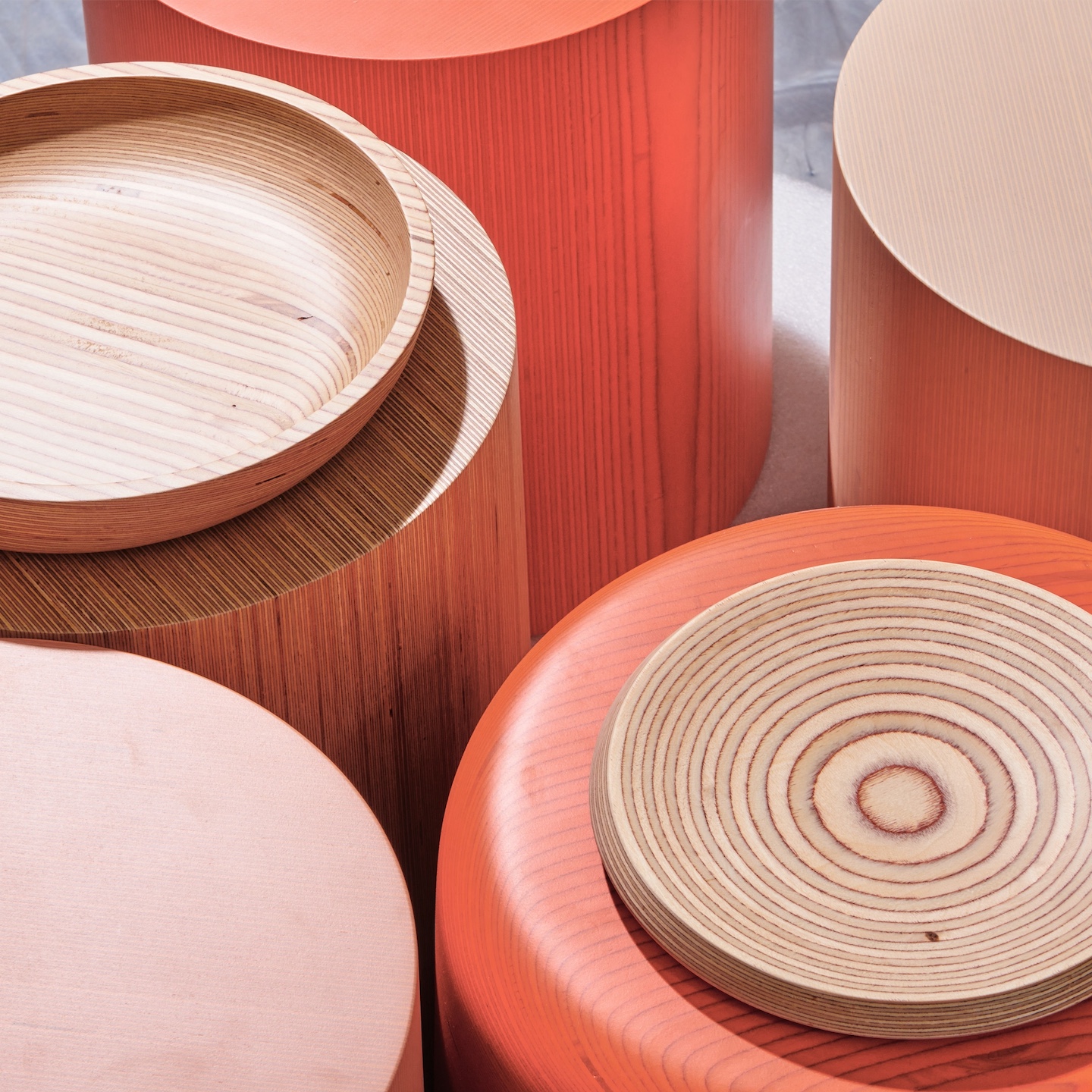
Stack It Up: Timbur Explores the Horizons of Stack Laminate Fabrication
About 15 years back, I had a brief stint in custom furniture fabrication. With a resume of pretty much zero experience, I did crude cuts, gluing and clamping, stabilizing large timbers for ripping and cross-cutting, and sanding—lots and lots of sanding.
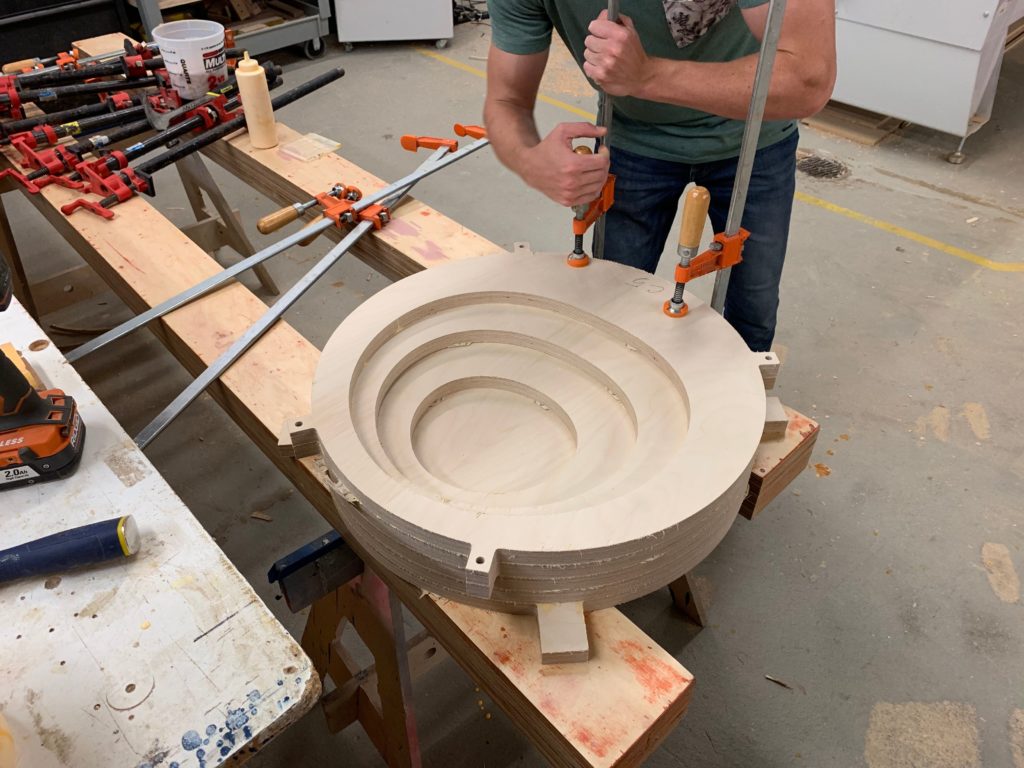
Timbur Stack Stool during assembly, the human part
It was labor intensive work, and the bulk of my three-month stint was spent on a single railing for a multi-story spiral staircase, a piece that took all of that time to assemble, as we machined thin laminates and slowly tortured them into their serpentine form via twisting and stabilizing and gluing.
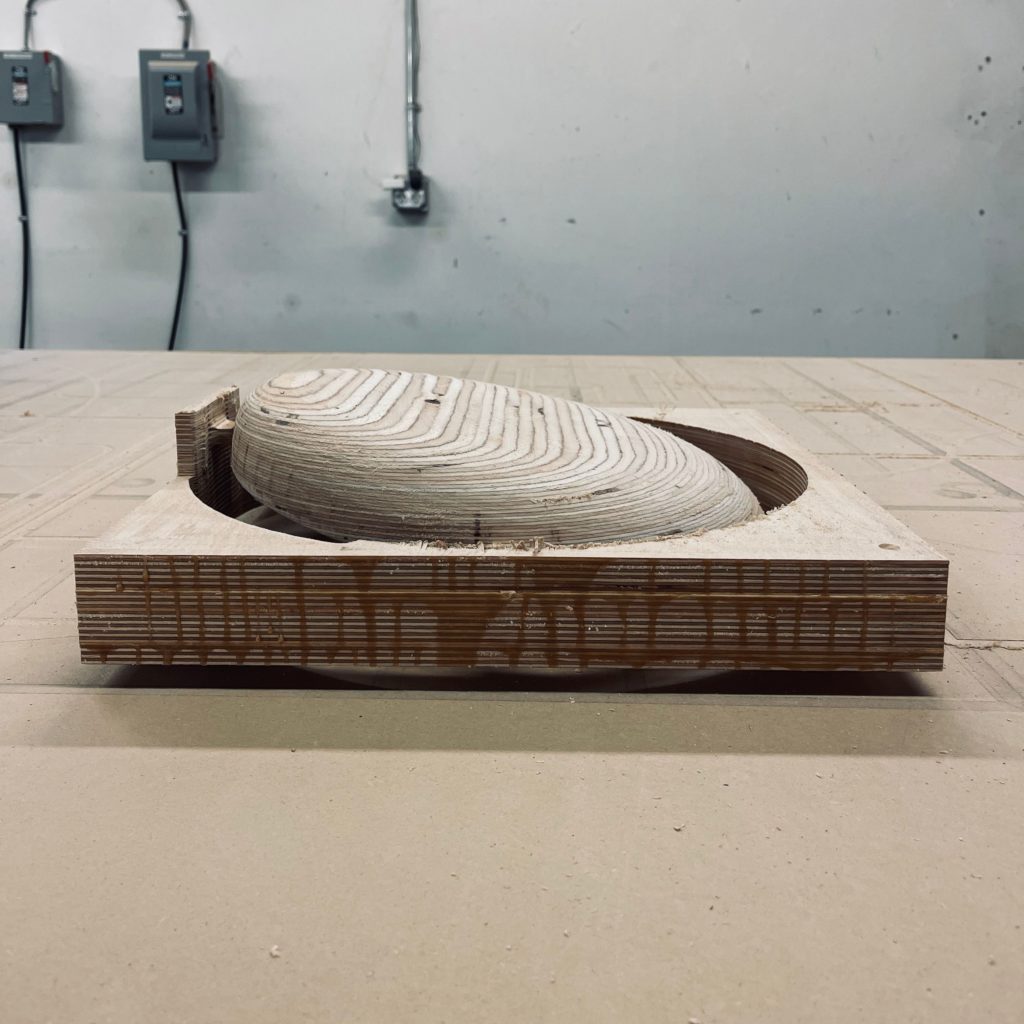
Tres in progress (above) and finished (below): “a raw yet refined and implicitly ergonomic tabletop object”
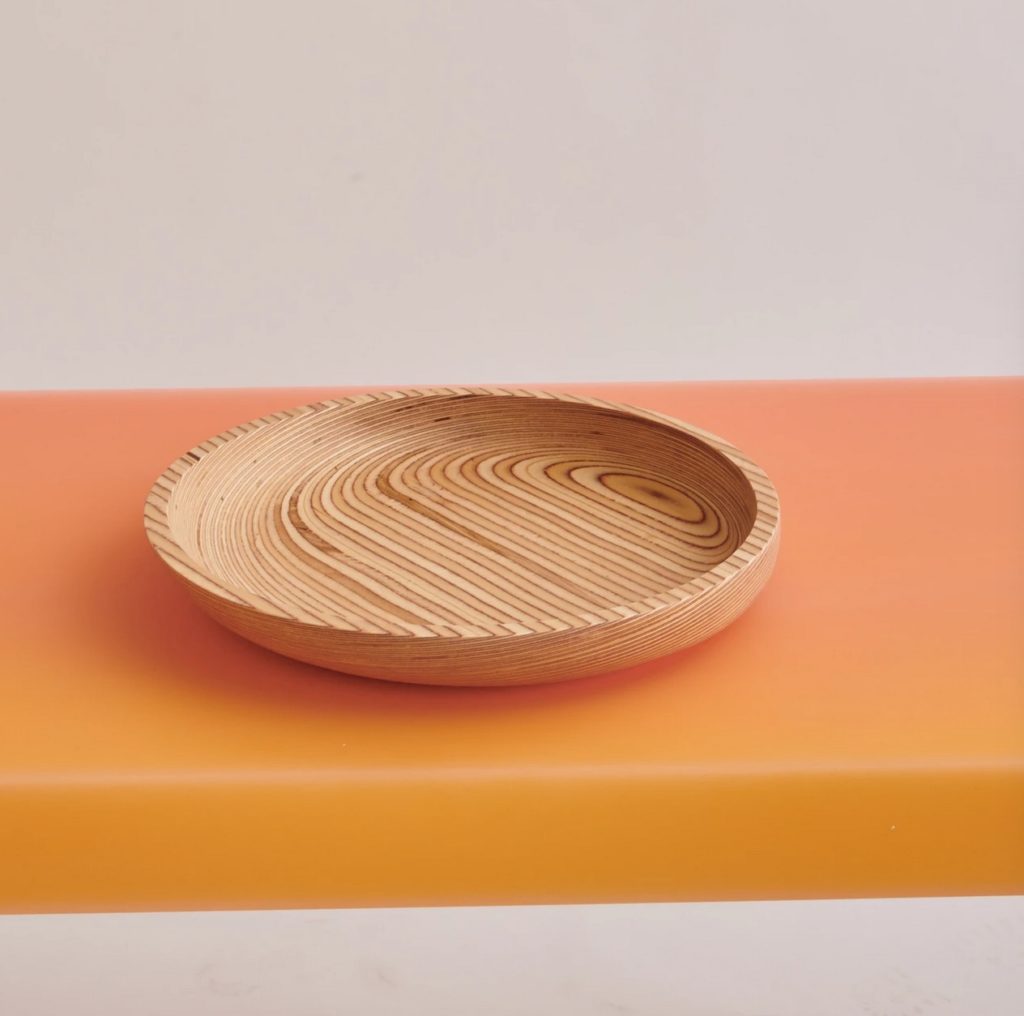
As shown by how Timbur—a custom fabricator of vertically laminated furniture—does it, the techniques we used for our curvy railing are long dated. But this isn’t to say that we’ve completely entered the AI age. To the contrary, Timbur aspires towards a synergy between artisanal hand-crafting/human-centered design and digital machining: “pulling from our deep roots in digital fabrication to create objects that blur the line between hi-tech and handcrafted, natural and fabricated, functional and artistic.”
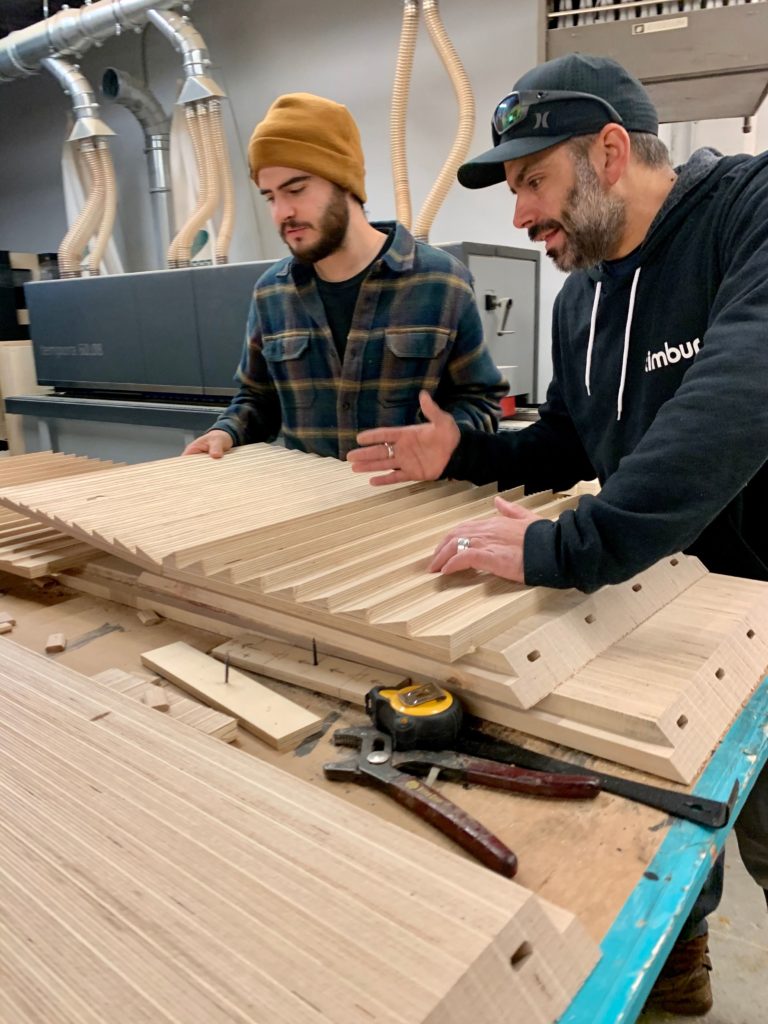
Builidng the Stack Fresnel Credenza
The process has philosophical and pragmatic underpinnings. Geared towards maximizing the use of material and minimizing waste, stack lamination uses sustainably sourced, FSC-certified Baltic Birch ply, essentially conceiving of this sheet stock as a kind of clay to be manipulated, molded, and finely-honed.
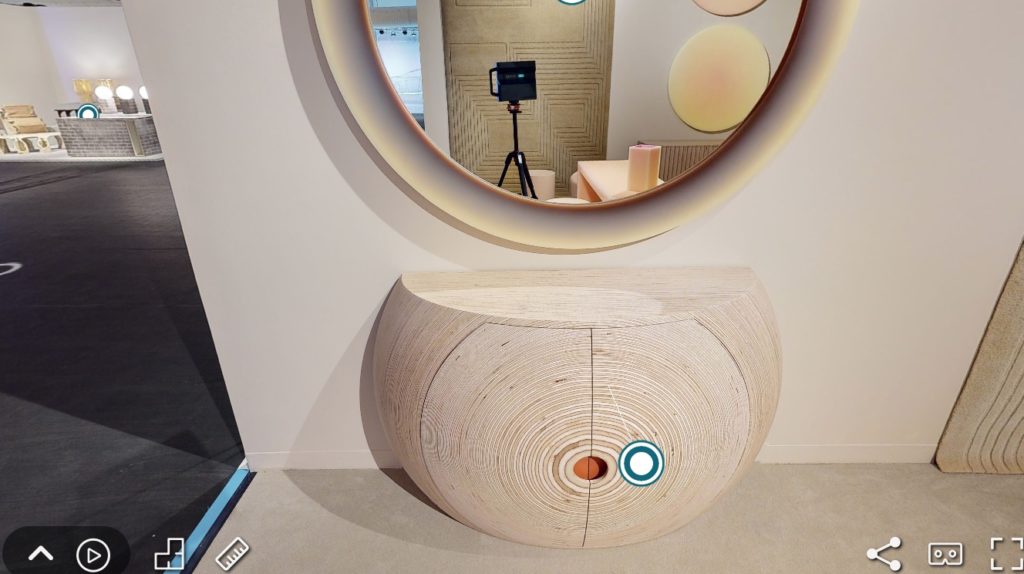
Stack Bubble Credenza. Image from the virtual reality platform at Design Miami.
The sheets are CNC-machined (the abbreviation means computer numerical control), then assembled (stacked) and glued into an approximation of the final desired form, then refined yet again with this robotics technology. A router or lathe is pre-programmed to perform specific movements determined by the artisan, effectively becoming an extension of the human vision. This manifests as a kind of honing of the physical capabilities, such that the tools to manipulate the material are better suited to achieve the imaginative conception. Here’s a time-lapse video of the robotics tech at work.
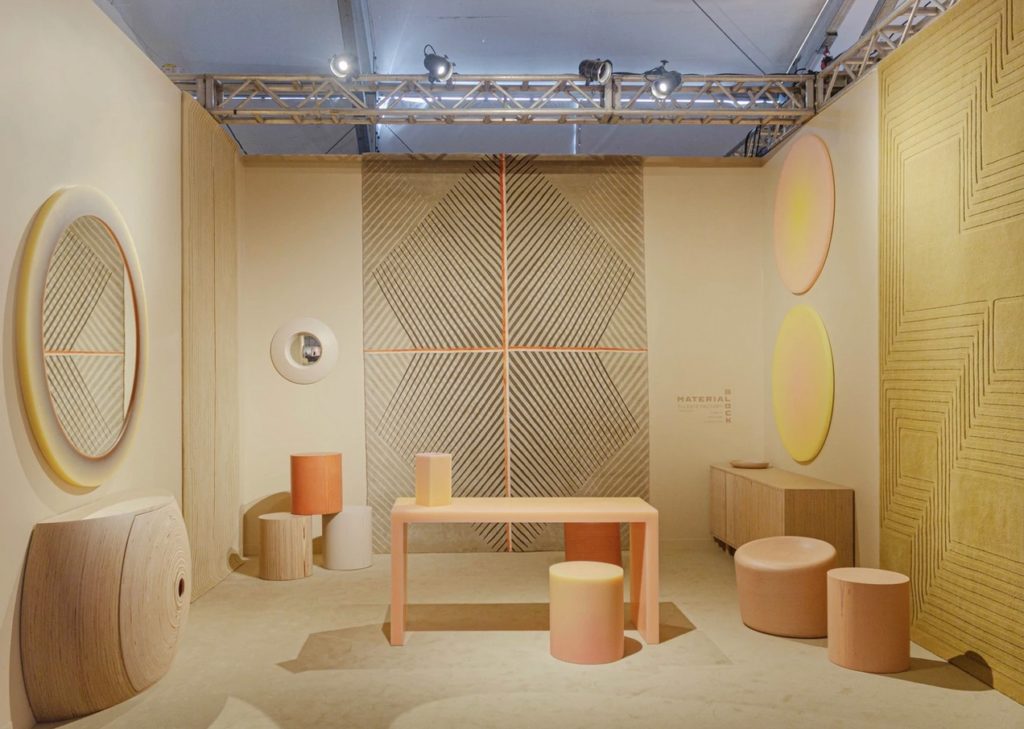
The “Material Block” booth at Design Miami, featuring stack lamination by Timbur, resin works by Facture Studio, and geometric rugs by Jt. Pfieffer
Timbur has been in the business of stack lamination for some time. Founder Ezra Ardolino is a trained architect with years of research and teaching experience in digital fabrication, principally at Cornell University and Pratt Institute. After approximately 10 years crating products and projects for marquee clients like Daniel Arsham, Bjarke Ingels, and SHoP Architects, Ezra and his wife (Timbur Operations Manager Ania Ardolino) began designing their own products, a step the Ardolinos characterize as a logical evolution.
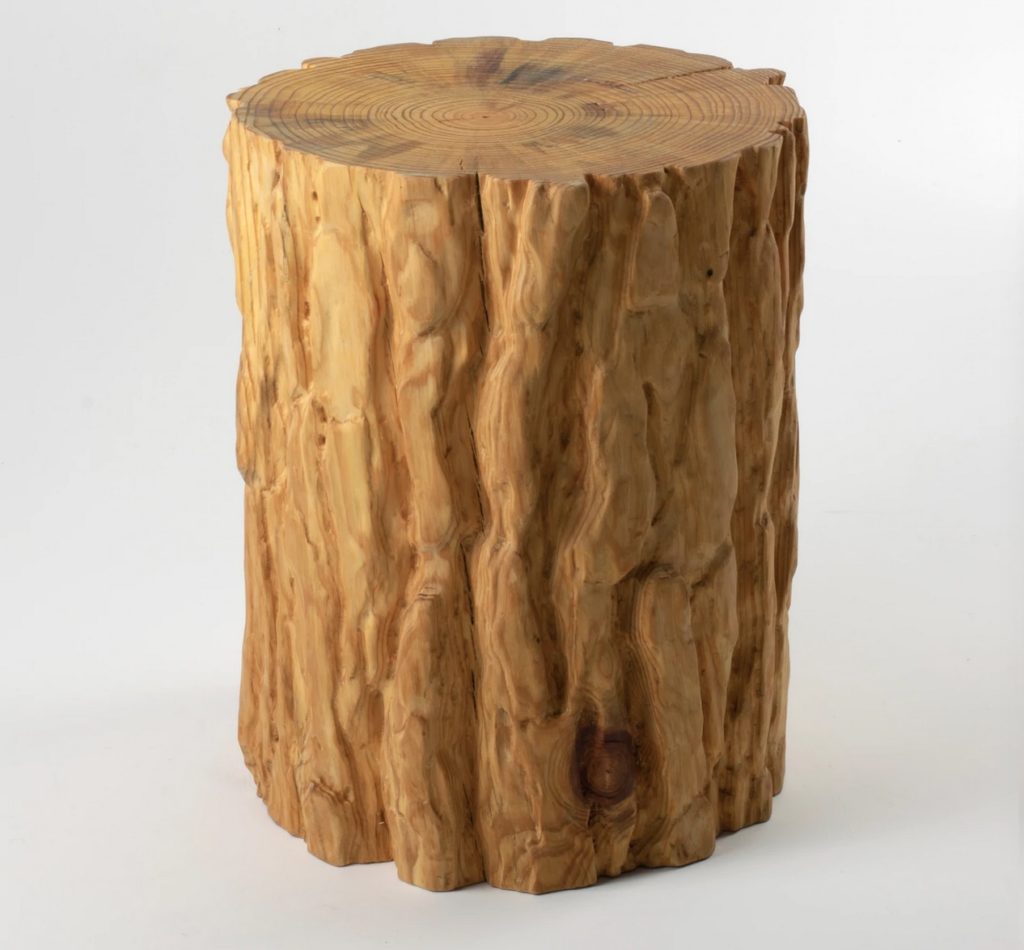
Pine bark displacement data mapped to a cylindrical form
The Ardolino’s current output includes the Bark series (above), a raw recapitulation of a natural form using kiln-dried pine, and their acclaimed Stack collection, highlighted last month at Design Miami with six exciting new pieces.
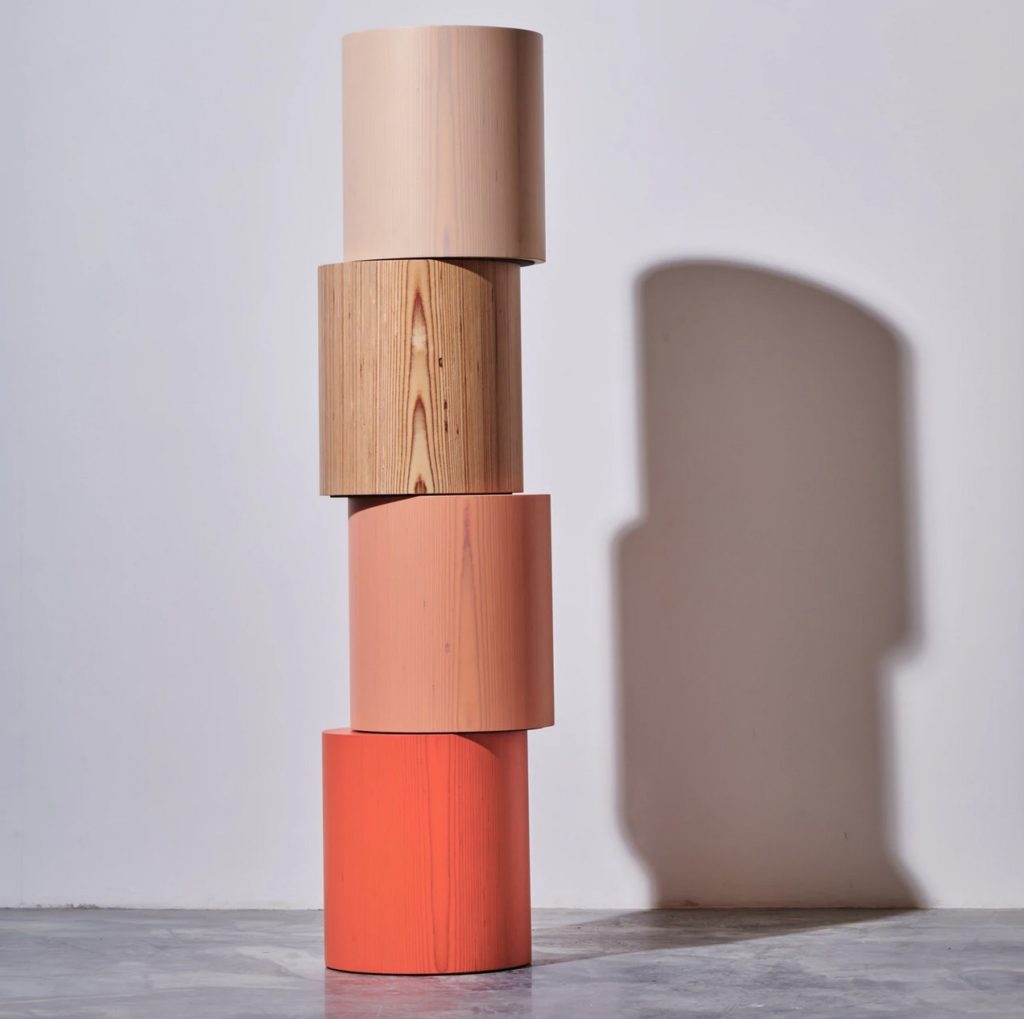
Stack Vert: a pure expression of stack lamination, with options for waterborne acrylic finish
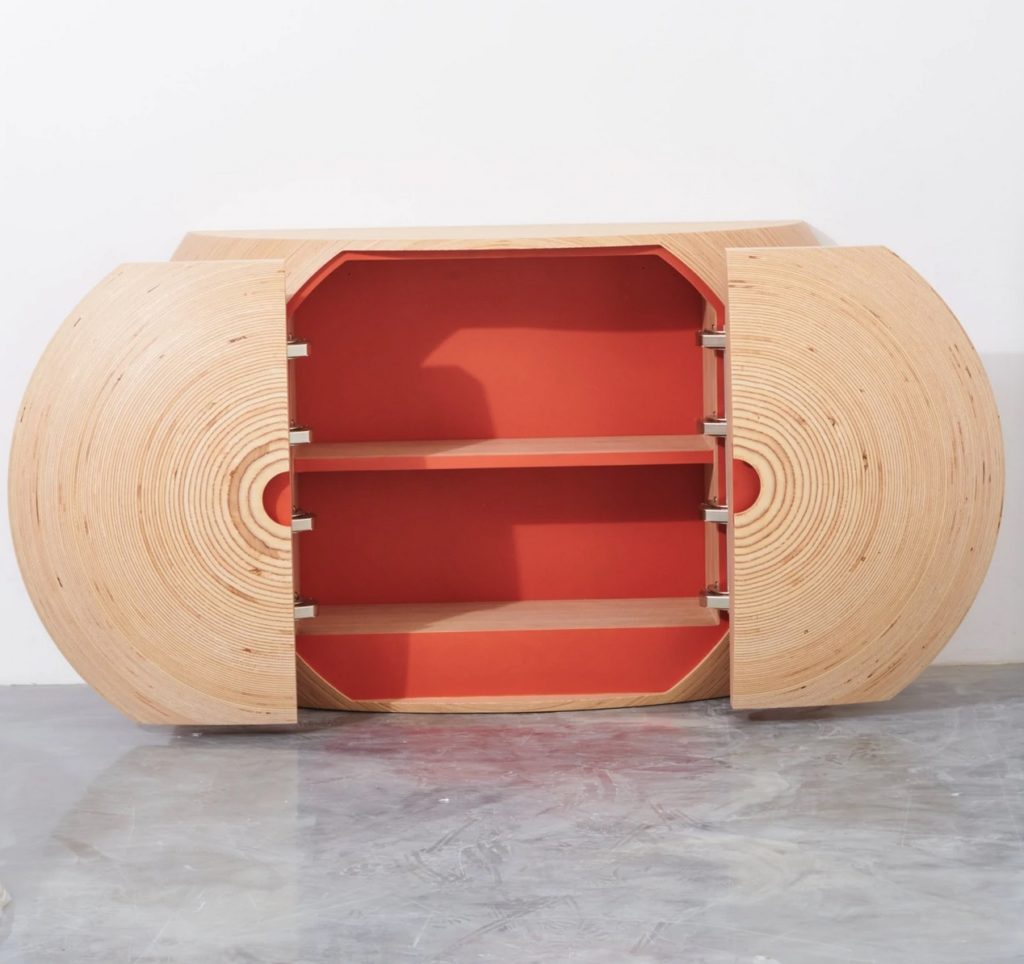
The Stack Bubble Credenza features concentric rings of stack-laminated Baltic birch.
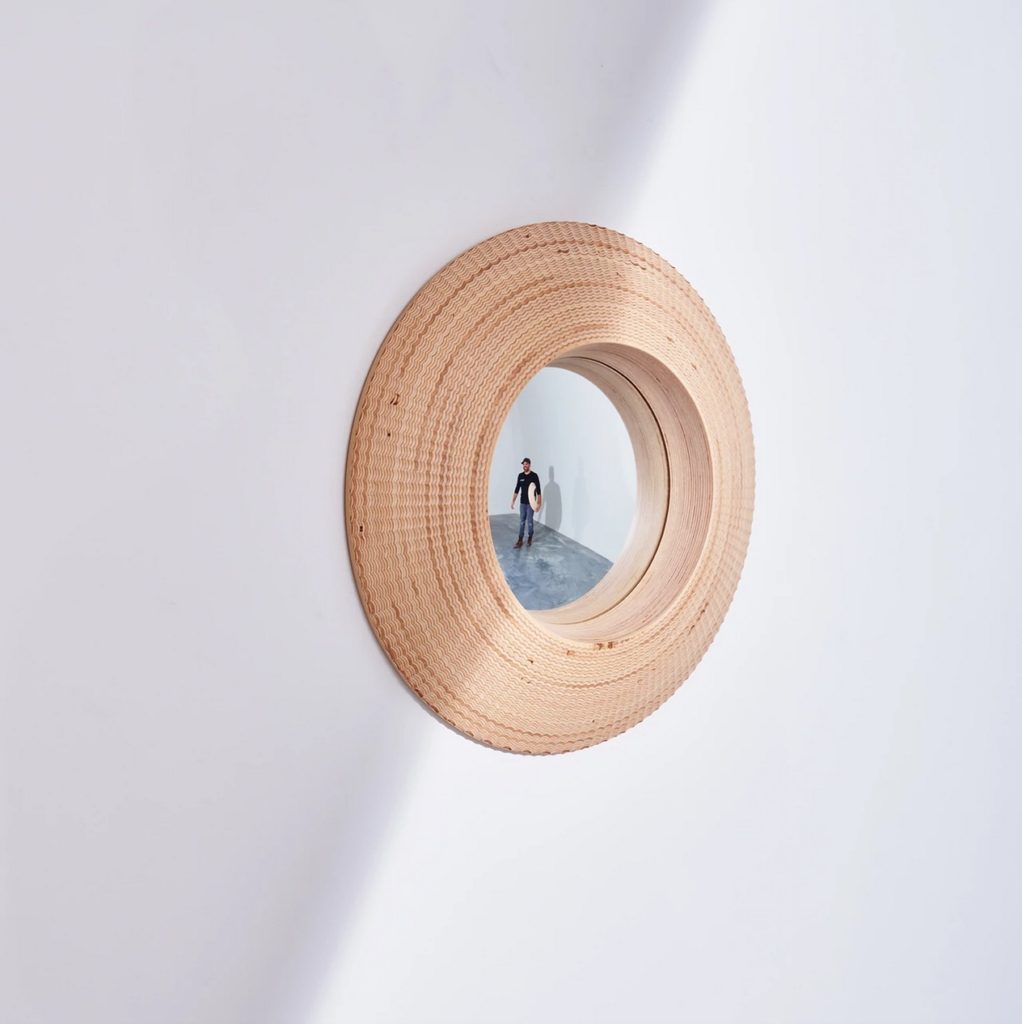
The innovative Stack Mirror: laminate layers create a subtle slope for a fish-eye effect
Additional items shown at Design Miami include the Fresnel credenza, Stack Lens, and Stack Tres. These join original pieces the Stack seat, Stack stool, and Stack bench.
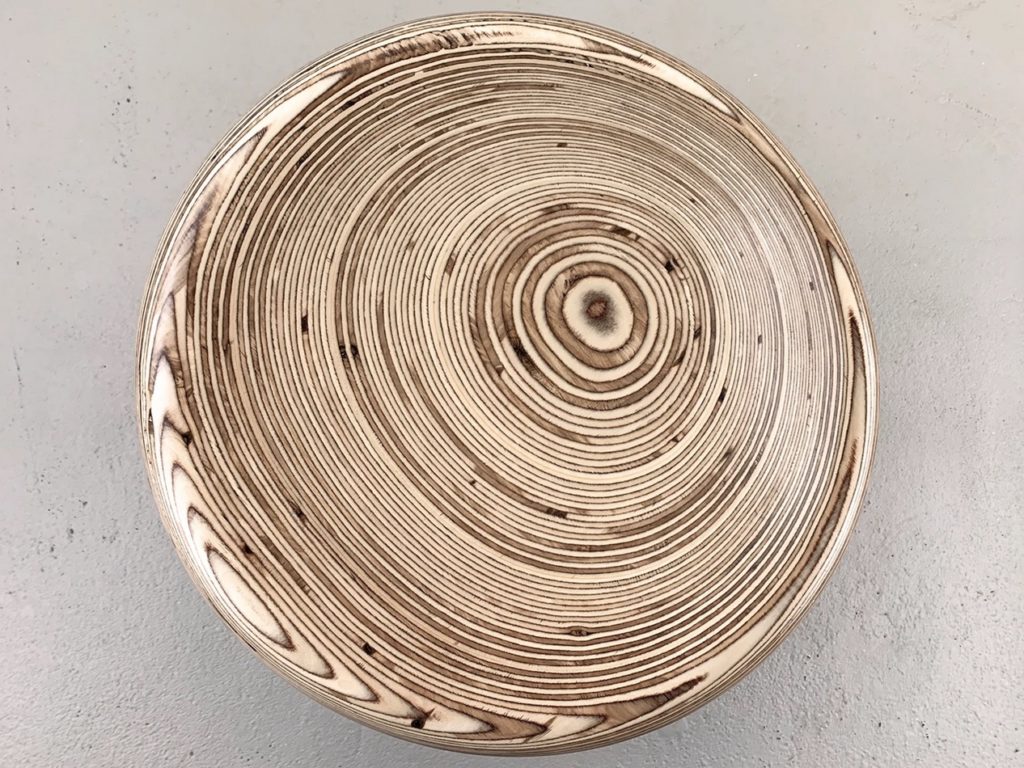
Stack seat from above showing the subtle concavity for comfortable sitting
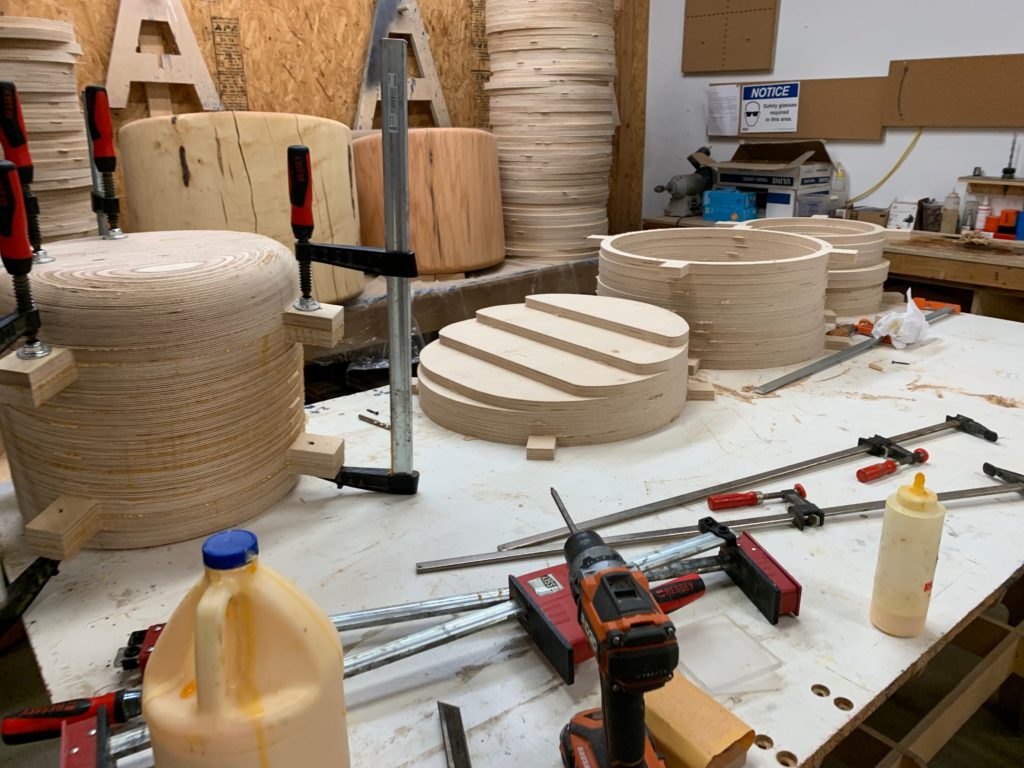
Stack stool in process (above) and final form with Vert and Stack seat (below)
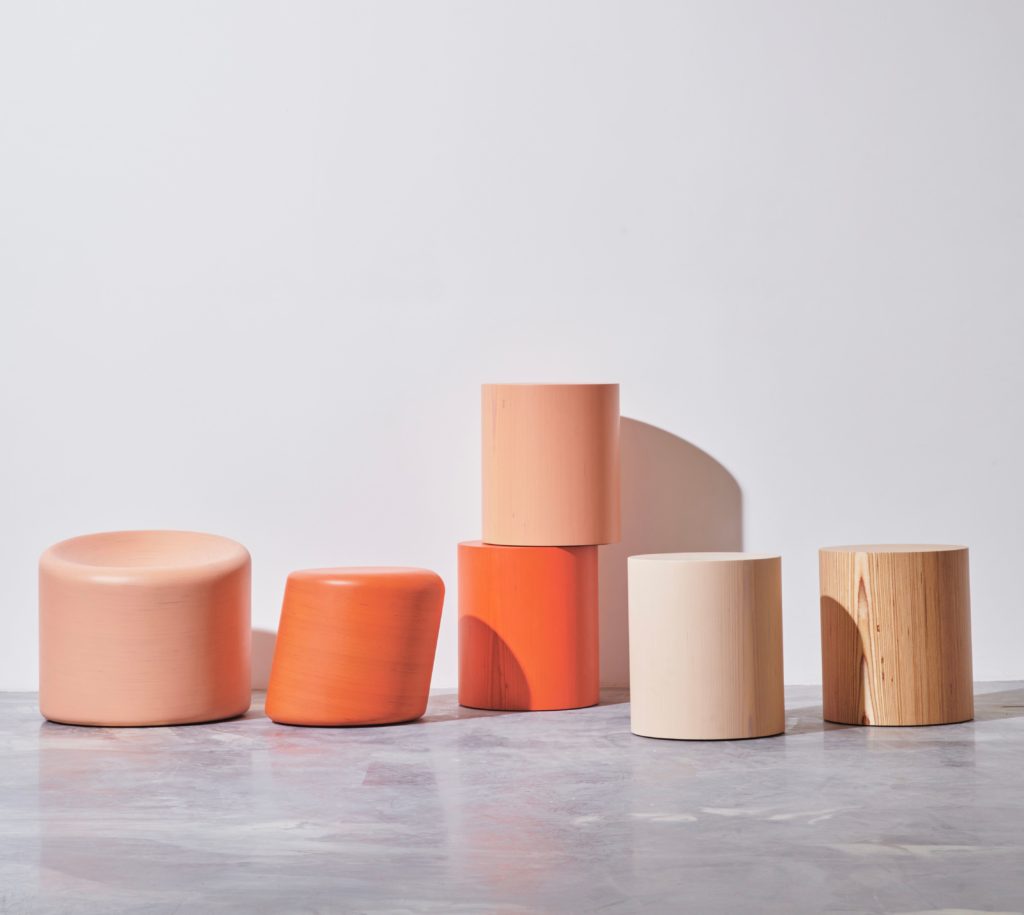
Timbur is based out of Atlantic Highlands, NJ. In addition to product design, they continue to do contract work for a roster of high-profile clients (see projects). Both Stack and Bark are available to the public at Tuleste Factory. All of Timbur’s products are made in the U.S. using sustainable materials and processes. See their website to find out more.

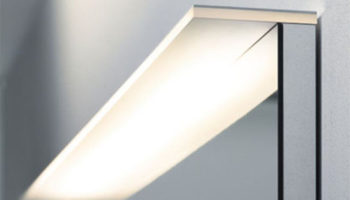
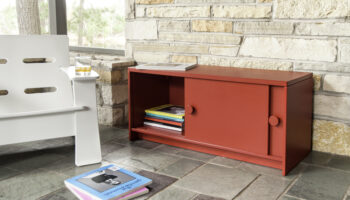

Leave a Reply